Pantex Blog
Local business keeps Pantex rolling
Casters of Amarillo, Inc. is a female, veteran owned business that keeps Pantex rolling along, literally. They are a local distributor for casters, wheels and material handling equipment and fulfill special orders that meet the needs of Pantex.
Karen Hicks, President of Casters of Amarillo, said the company has been working with Pantex since at least 1991 when she took over the company from her parents who started the business in 1974.
Karen is a retired Lt. Col in the Army, and served 11 years active duty in military intelligence along with time in a civil affairs unit and reserve training unit in Lubbock.
She said the relationship with Pantex is special because of what is done here.
“There’s a kindred spirit,” she said. “We’re happy we can be of service to Pantex. It’s a vendor relationship, but it’s also a service relationship. It’s like the Army and military – it’s all about service.”
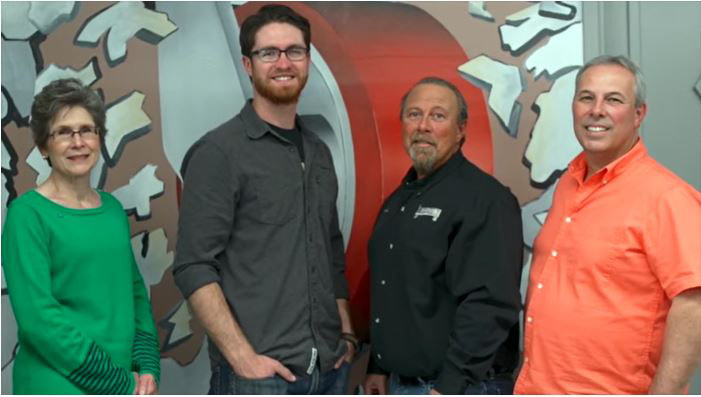
CNS employees receive DP awards
The week of October 14 was an impressive one for CNS as more than 572 employees from Pantex and Y-12 were recognized with a 2018 Defense Programs Award of Excellence.
At Y-12, Site Manager Bill Tindal, NPO Deputy Manager Teresa Robbins, and NNSA’s Dr. Mark Suriano, assistant deputy administrator for Stockpile Management, congratulated the winners at an October 15 event. At Pantex, Site Manager Todd Ailes, Deputy Manager for the NNSA Production Office at Pantex and Y-12 Bill Eckroade, NNSA Acting Assistant Deputy Administrator for Stockpile Management John Evans, and Manager of Stockpile Programs Colby Yeary honored the winners at an October 17 event.
Tindal said, “I want to thank each of you for all your hard work, your dedication, and your commitment to the mission. Our country is safer because of what you do.”
Evans said, “It’s really important that we get out and we see the work this complex can do. Here at Pantex it’s nothing short of amazing. That plaque on the wall that all roads come to Pantex that’s true. The important thing though is the capabilities that are embodied in you all allow for the weapons to go out of Pantex. Without your expertise and dedication and devotion to your jobs those weapons don’t go out of Pantex, they don’t go come back for repairs and they don’t leave in a way that they can be part of the deterrent.”
The DP Award of Excellence, established in 1982, recognizes individual and team accomplishments from across the nuclear weapons complex in support of NNSA’s nuclear weapons program.
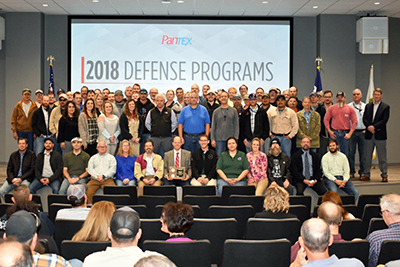
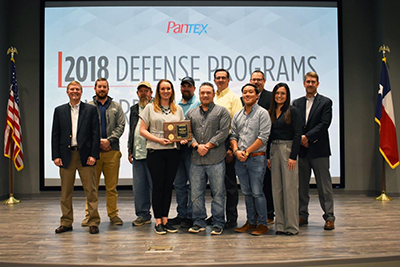
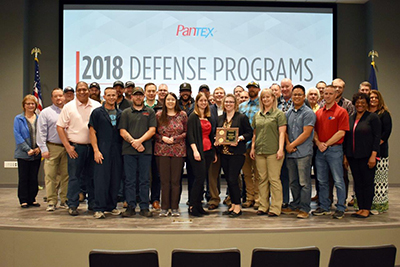
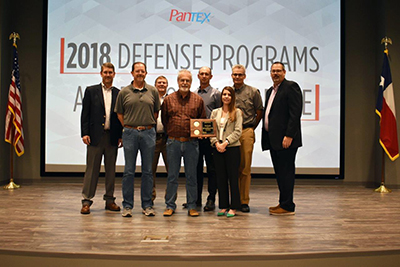
Pantex Fire Department takes first at BBQs
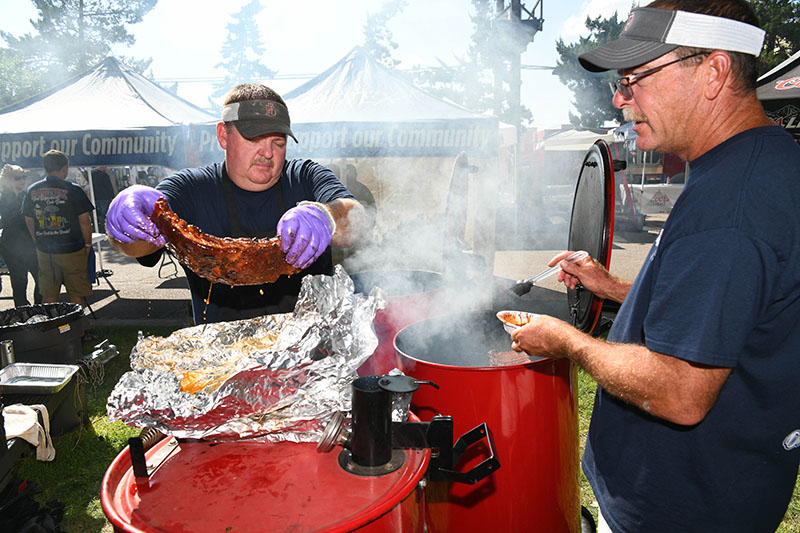 Congratulations to the Pantex Fire Department Cook Team who took home bragging rights at two recent competitions.
Congratulations to the Pantex Fire Department Cook Team who took home bragging rights at two recent competitions.
They placed first in corporate brisket at this year’s Amarillo Chamber of Commerce Barbeque. The popular event took place in the streets of downtown Amarillo near the chamber building in September. CNS Chief Operating Officer and Chamber President Michelle Reichert and CNS Senior Director for Communications Jason Bohne also participated as barbeque judges. Among the other barbeque dishes the PFD created, they made pulled pork Frito pies that CNS volunteers handed out to the public when they visited the booth.
The team also won as overall grand champions of the Canyon Chamber Chowdown BBQ Cook-off on October 4. The team was comprised of barbeque masters and teammates, David Stewart, Kevin Payne, Kyle Butler, Scott Johnson, Matthew Ladd, Justin Baker, Brenda Graham and Jeremy Baker. They competed against 37 other teams and received 2nd place in brisket, 2nd place in pork, and 3rd place in ribs earning them the grand champion title.
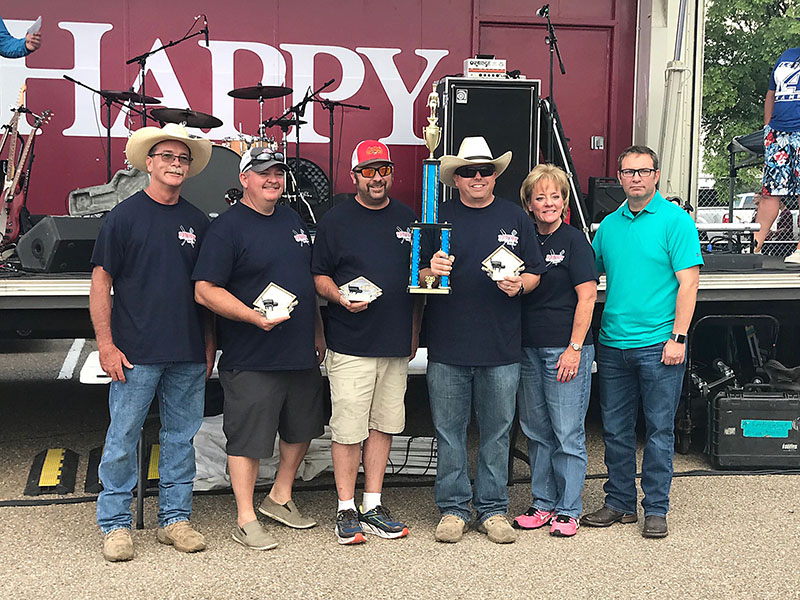
CNS employees receive NA-50 awards
CNS employees were recognized with awards from NNSA’s Office of Safety, Infrastructure, and Operations – or NA-50 – for the exceptional accomplishments made in support of NA-50 efforts to achieve the NNSA mission. At the September 10 Pantex event, Bill Eckroade, Pantex deputy manager for the NNSA Production Office, and NA-50 Associate Administrator Jim McConnell honored employees who worked on the projects. At Y-12 on the same day, NPO Manager Geoff Beausoleil, Y-12 Site Manager Bill Tindal, and Senior Director of Infrastructure Programs Steve Laggis handed out the awards.
“Each of our sites have old infrastructure, and that adds substantial challenges in the workforce and keeping our operations efficient, reliable, and safe,” Eckroade said. “As I’ve seen people trying to manage that infrastructure, you see workers using innovation persistence and sometimes sheer determination for making old infrastructure work to achieve the mission we’ve been assigned. But, the good news is that in recent years, we have seen enhanced allocations of resources to help us with our infrastructure.”
McConnell said Pantex is a good example of the forefront of what NA-50 does considering the combined safety implications of the site and the large amount aging infrastructure. “My job is to help you succeed, and your success is the thing that I then get to feed back into the system to allow people to bring us even more opportunities and more resources, so that the success you did in 2018 turns into the things you’re doing right now,” he said. “It was great seeing all the great work you do here.”
At Y-12, Laggis thanked team members for demonstrating excellence in “doing the right things to the right infrastructure in the right way.”
Tindal told the honorees, “Your insistence on excellence, your tenacity in doing the job right, and your understanding that teamwork is often the best solution on a project, has been recognized by NNSA as the best of the best across the enterprise in 2018.”
Beausoleil’s comments echoed those of McConnell in that CNS’s work has brought success. “Your work in revitalizing our infrastructure will help support missions for years to come. You have my sincere gratitude and congratulations,” he said.
Laggis ended the program by saying each of the winning teams were important ingredients in the success of CNS. “Without your great work,” he said, “we could not reach our goals and complete our mission.”
CNS Enterprise Fire Department Team wins Sportsmanship Award at HAZMAT Challenge
A combined CNS Enterprise Fire Department Team represented Pantex and Y-12 at the 2019 Hazardous Material (HAZMAT) Challenge held at Los Alamos National Laboratory (LANL) recently.
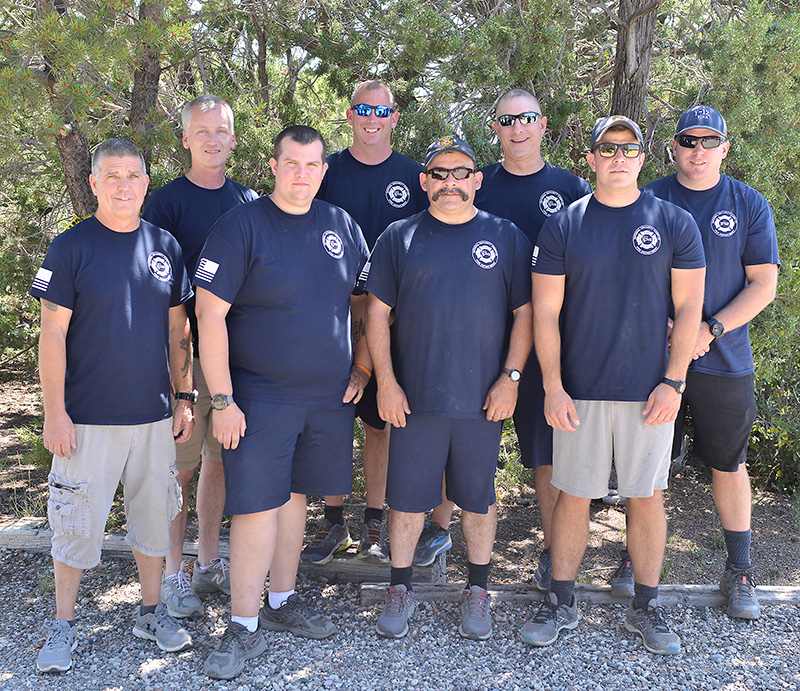 The combined team did an outstanding job representing both sites and were voted by the other teams and operators in the competition as winners of the Sportsmanship Award. This award recognizes a team that embodies the values of working as a team, working with other teams, and being willing to step up wherever a need arises.
The combined team did an outstanding job representing both sites and were voted by the other teams and operators in the competition as winners of the Sportsmanship Award. This award recognizes a team that embodies the values of working as a team, working with other teams, and being willing to step up wherever a need arises.
“The CNS Enterprise FD Team did an excellent job. It was rewarding to see how they came together the first day operating as one team in the events,” Doug Trout, CNS Senior Director, Enterprise Emergency Services said. “The planning beforehand and collaboration by the team was evident in all of the events. They have ideas for training to take back and are looking forward to next year. This was an excellent event.”
The HAZMAT Challenge has been hosted by the Emergency Management Division of LANL for the past 22 years, and HAZMAT teams network with one another, practice technical skills, and learn new HAZMAT techniques under realistic conditions in a safe environment.
During the Challenge, vehicles, trucks, tankers, and rail cars are used in some of the props to mimic real-life hazardous material situations. Past Challenge scenarios have included drug laboratory or chemical hazard identification, manipulation of complex valve configurations to stop leaks, confined space rescue, compressed gas leaks, a leaking rail car dome, pressurized drum opening, stinger operation responding to damaged tanker trailer, and damming/diking exercise from an overturned tanker.
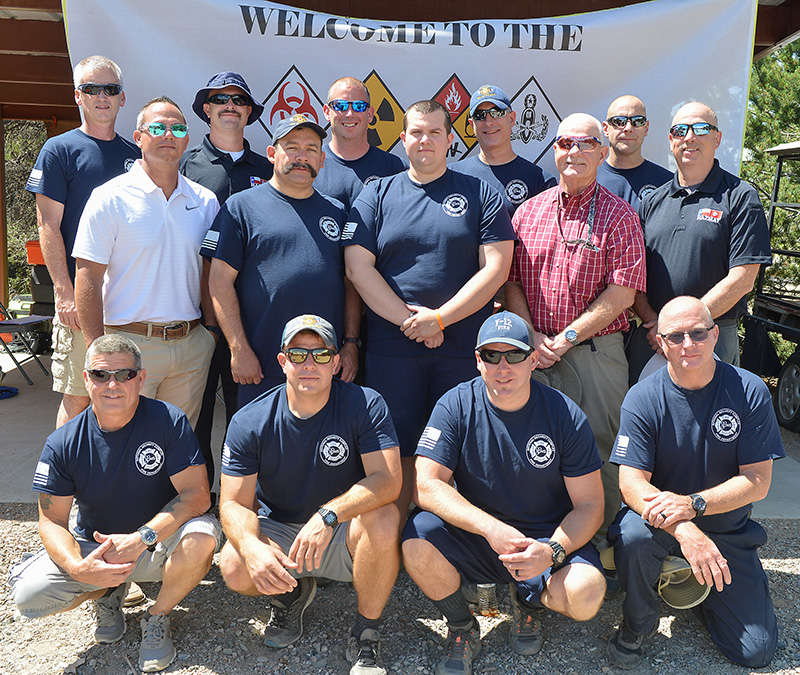 Lyle Cary, Vice President of Safeguards, Security, and Emergency Services added, “The training value and relationships built during these events strengthens capability across the Nuclear Security Enterprise, and because of the number of teams from federal, state, and municipal departments, it strengthens the Nation”.
Lyle Cary, Vice President of Safeguards, Security, and Emergency Services added, “The training value and relationships built during these events strengthens capability across the Nuclear Security Enterprise, and because of the number of teams from federal, state, and municipal departments, it strengthens the Nation”.
Representing Pantex were Firefighters John Sappington, Daniel Sholder, and Cody Steever, and Fire Captains Mark Campbell and Chad Zarbock.
Representing Y-12 were Firefighters Chris Altman, Scot Rose, and Craig Shaver, and Fire Captains Jeremy Maiden and Jim Arnold.
